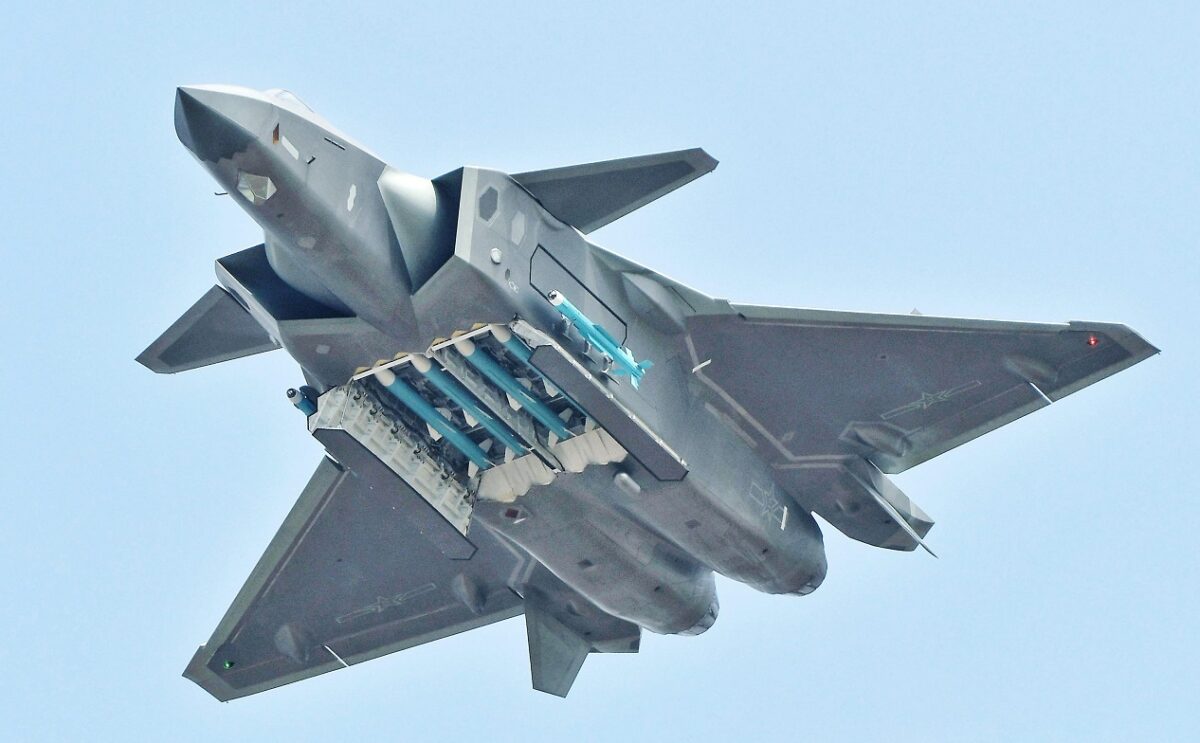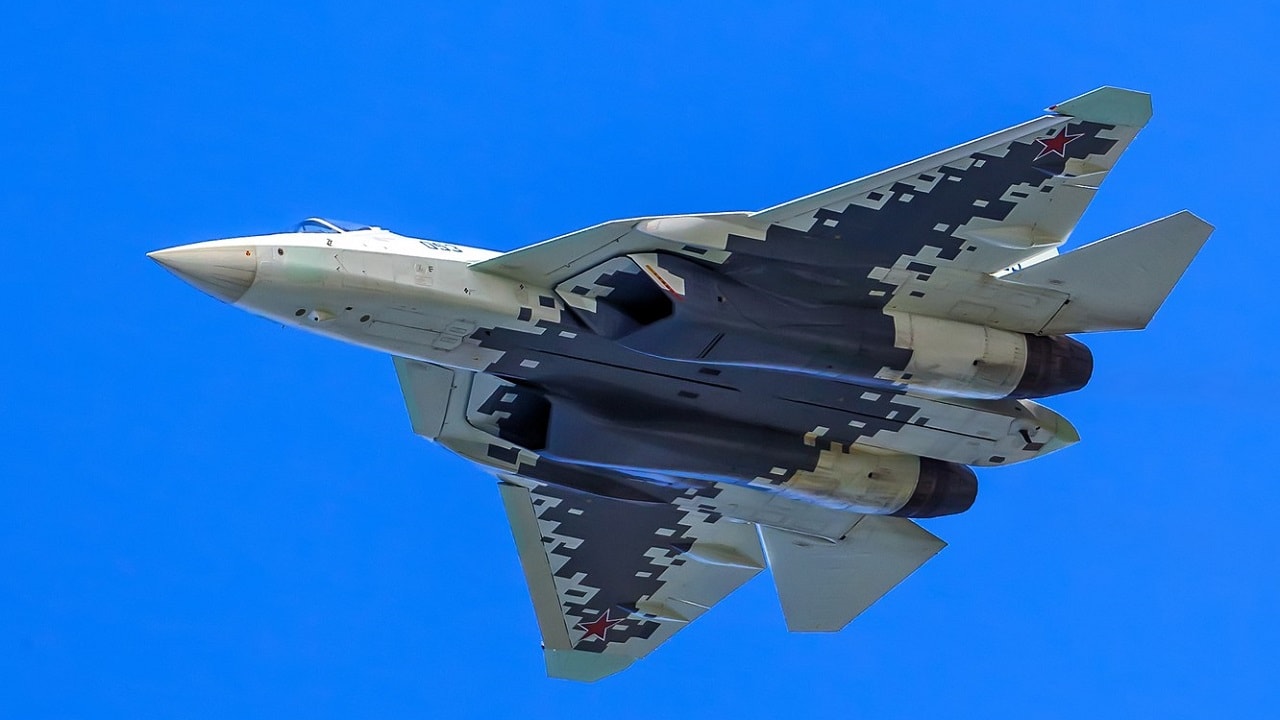While a lot gets made of Russia’s new Su-57 stealth fighter as it was featured in the new Top Gun: Maverick movie, it seems Moscow does not have that many of them. Here is how one expert explained the problems Russia has with its stealth fighter fleet…or lack thereof: As development continues on the next generation of fighters the United States aims to field, the current top-of-the-line 5th generation remains a very small fraternity of stealthy platforms. These jets are frequently compared as though they bring inherently similar capabilities to their respective nations, but, as we’ve covered in-depth in the past, that isn’t really the case. The four operational stealth fighters in the world today are designed to meet different needs within their respective nation’s air warfare doctrine, and their designs are subject to the budgetary or technological limitations inherent to their nations of origin.
But—just for the sake of argument—let’s assume that all stealth fighters really are created equal… then the United States would still have an overwhelming advantage in the stealth fighter arena. And when you include America’s allies in the arithmetic, that advantage becomes all the more palpable.
In a tally of nations with operational stealth fighters, you might be surprised to learn that Russia isn’t even in the top 10 — which is pretty remarkable considering Russia itself is one of only three nations to develop and field a 5th generation platform. In fact, the United States alone already has more stealth fighters than all of Russia and China combined.
These figures are as up-to-date as we’ve been able to find, but it’s important to remember that production on many of these aircraft is ongoing, which is sure to continue increasing these totals. However, for Russia in particular, production of the Su-57 will be even more difficult following a new slew of sanctions put in place following its invasion of Ukraine.
Stealth fighters by the numbers: What dogfight comparisons won’t tell you
The United States fielded the world’s first operational stealth aircraft, the F-117 Nighthawk, in 1983, and then maintained a total monopoly on stealth all the way until 2017, when China’s Chengdu J-20 entered service. In 2018, Russia became the third nation on the planet to field its own stealth fighter, in the Sukhoi Su-57 Felon.
Today, these three powers remain the only nations on earth with existing stealth fighter production lines, though they aren’t the only nations with factories pumping these aircraft out. Of course, news about production isn’t very sexy, so it tends to be glossed over, but hidden behind the dull hum of factory machinery, acquisition talk and budget line items, there lies a massive American strategic advantage.
Here are the nations in the world operating the largest numbers of stealth fighters, ranked by totals.
1. The United States — Total stealth fighters: Approximately 600+
F-22 Raptor: 150-186
F-35 Lightning II: Approximately 450
America’s first stealth fighter, the air-superiority F-22 Raptor, began production in 2000 and continued through 2006, ultimately fielding 186 airframes (about 30 of which were intended for training but may now be upgraded for combat use).
The first production F-35 rolled off the assembly line that same year, and to date, Lockheed Martin has produced more than 750 Joint Strike Fighter airframes, with nearly 300 of those jets going to the U.S. Air Force alone. With all iterations of the F-35 tallied across the Air Force, Navy, and Marine Corps, the U.S. currently operates approximately 450 total F-35s, according to the Congressional Budget Office.
2. China — Total stealth fighters: 150
The Chengdu J-20 Mighty Dragon is China’s first stealth fighter, seemingly drawing much of its design inspiration from a combination of stolen plans for America’s two operational stealth jets combined with a defunct Russian effort known as the MiG 1.44. China has, thus far, struggled to field a truly 5th generation engine for its stealth fighters, instead relying on Russian-sourced 4th generation engines for much of its production run before turning to domestically produced equivalents in more recent years. Most recently, the introduction of thrust vector control in the J-20B has been part of an effort to close the capability gap with America’s F-22.
It’s tougher to ascertain certain figures regarding China’s J-20 fleet, as some American assessments place their total numbers at 70 or even lower, but China’s state-owned “South China Morning Post” reported late last year that the nation now operates some 150 stealth fighters, and that seems like a feasible figure.

J-20 Stealth Fighter.
3. Australia — Total stealth fighters: 44
As of February of this year, the Sydney Morning Herald reported that Australia is operating a fleet of 44 F-35 Joint Strike Fighters.
4. Norway — Total stealth fighters: 34
In December of 2021, Norway took delivery on three more F-35As, bringing their total to 34. Today, Norway has the world’s only fully stealth Air Force, with its F-35s replacing the nation’s aging fleet of F-16s.
5. Israel — Total stealth fighters: 33
In March of 2022, Israel took delivery on three more F-35s, bringing their total to 33 Joint Strike Fighters.
6. South Korea — Total stealth fighters: 32
An important U.S. ally in the Pacific, South Korea has taken delivery of 32 F-35s to date.
7. Netherlands — Total stealth fighter: 24
In January of this year, the 24th F-35A was delivered to Leeuwarden Air Base in the Royal Netherlands.
8. The United Kingdom — Total stealth fighters: 23 (after losing one)
The Brits have been involved with funding the F-35’s development since the program’s onset. Thus far, the UK has taken delivery on 24 total F-35 airframes, but one was lost in a mishap last November, when an air-cover was accidentally left on the short-take-off, vertical landing F-35B variant aboard the nation’s flagship, the HMS Queen Elizabeth, during takeoff. The F-35 promptly crashed into the ocean and was later recovered.
9. Japan — Total stealth fighters: 23
With the aim of countering China’s growing presence in the Pacific, Japan intends to operate more than 120 F-35s, but as of the beginning of 2022, 23 F-35s have been delivered.
10. Italy — Total stealth fighters: 17
Italy’s F-35s are actually assembled within Italian factories, and to date, a total of 17 stealth fighters have been delivered. As production continues to ramp up, Italy recently announced a second installation will soon be operating the Joint Strike Fighter.
11. Russia — Total stealth fighters: 16
Even saying Russia now has 16 stealth fighters is a little bit of a stretch. The first 12 Su-57s are all hand-built prototypes of the sort we wouldn’t (and didn’t) count toward the totals for America’s or China’s fighters (the total F-22 count would be 195, rather than 186 otherwise). But Russia chose to put its prototypes into active service to garner media attention in 2018, and those prototypes still represent the majority of their stealth fleet.
The remaining four Su-57s are actual production jets — two of which were just delivered earlier this year. This number would have been five, but the first production Su-57 promptly crashed immediately after departing from the factory in which it was built.
Alex Hollings is a writer, dad, and Marine veteran who specializes in foreign policy and defense technology analysis. He holds a master’s degree in Communications from Southern New Hampshire University, as well as a bachelor’s degree in Corporate and Organizational Communications from Framingham State University.

